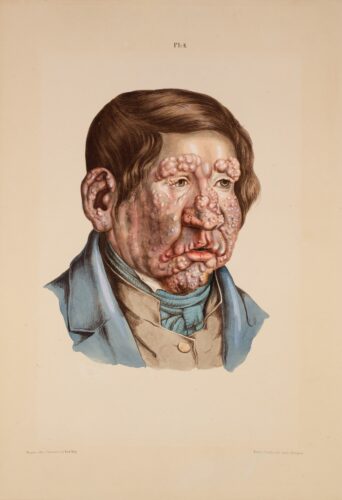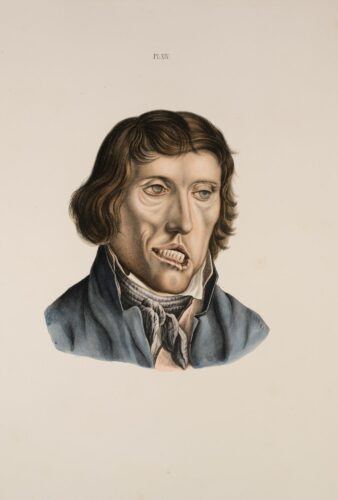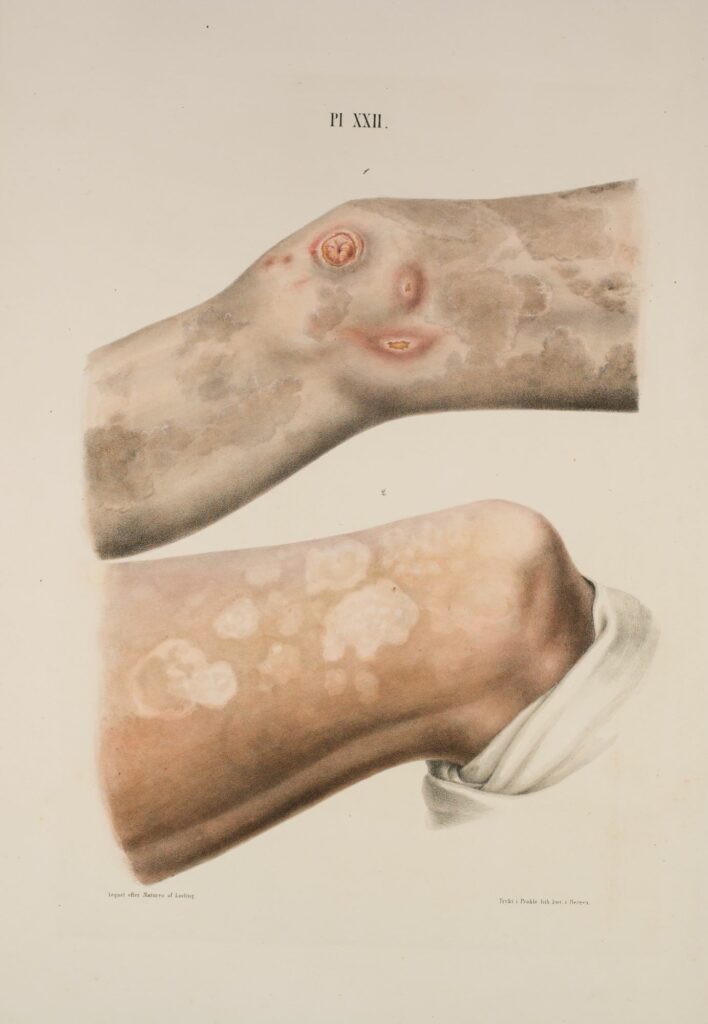Symptoms and different forms of leprosy
The symptoms can manifest themselves in many different degrees and variants, and a distinction has traditionally been drawn between two main types of leprosy: the lepromatous and the tuberculoid forms. The amount of bacteria and the immune response of each individual is what determines how the disease manifests itself and develops over time.
The lepromatous form develops in people with a significantly impaired immune system, and the infection often takes the form of characteristic nodules in the skin. Many patients can experience lengthy periods when the infection is less active, but regular outbreaks will lead to a steady deterioration in the patient’s health and appearance. The nodules often appear on the patient’s face and hands, but internal organs can also be affected. Nodules in the windpipe, vocal cords and ear canals can lead to hoarseness, breathing difficulties and poor hearing.
In the tuberculoid form of leprosy, it is the peripheral nerve system that is attacked, particularly the sensory nerves in the skin. This leads to a lack of sensation, or anaesthesia, which, in turn, can lead to a risk of burns, cuts and stress injuries, usually on the hands and feet. As a result of frequent ulcerations and persistent infections, the fingers and toes can often be significantly damaged over time, including bone and cartilage damage. The degeneration of cartilage in the nose and throat can lead to hoarseness and breathing problems. Many of the body’s natural reflexes and fine motor functions are also damaged, and patients can suffer from characteristic facial paralysis and disfigurement. Many contract eye infections and gradually go blind.

Johan Ludvig Losting. Atlas Colorié de Spedalskhed. 1847. The University of Bergen Library.

Johan Ludvig Losting. Atlas Colorié de Spedalskhed. 1847. The University of Bergen Library.

Bottom: white patches on the skin of a patient with the tuberculoid form of leprosy.
Johan Ludvig Losting. Atlas Colorié de Spedalskhed. 1847. The University of Bergen Library.



